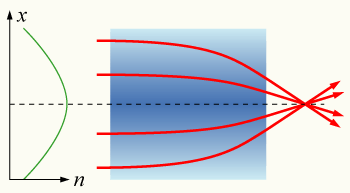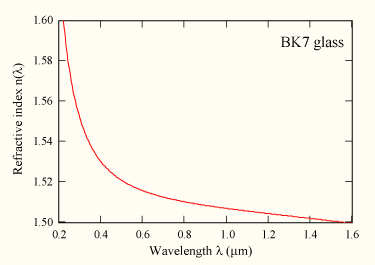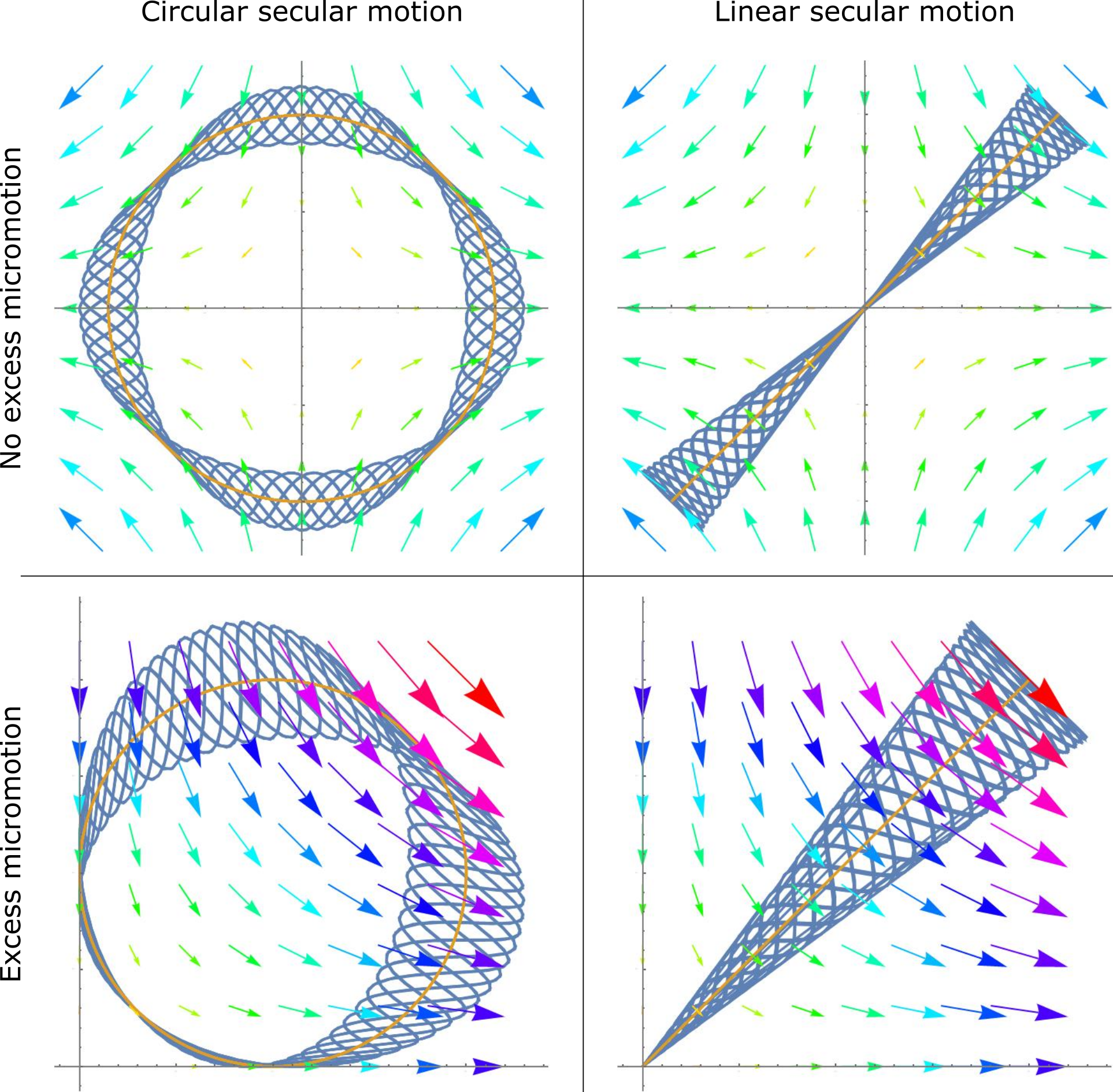|
Self-focusing
Self-focusing is a nonlinear optics, non-linear optical process induced by the change in refractive index of materials exposed to intense electromagnetic radiation. A medium whose refractive index increases with the electric field intensity acts as a focusing lens for an electromagnetic wave characterized by an initial transverse intensity gradient, as in a laser beam. The peak intensity of the self-focused region keeps increasing as the wave travels through the medium, until defocusing effects or medium damage interrupt this process. Self-focusing of light was discovered by Gurgen Askaryan. Self-focusing is often observed when radiation generated by femtosecond lasers propagates through many solids, liquids and gases. Depending on the type of material and on the intensity of the radiation, several mechanisms produce variations in the refractive index which result in self-focusing: the main cases are Kerr-induced self-focusing and plasma self-focusing. Kerr-induced self-focusing ... [...More Info...] [...Related Items...] OR: [Wikipedia] [Google] [Baidu] |
Filament Propagation
In nonlinear optics, filament propagation is propagation of a beam of light through a medium without diffraction. This is possible because the Kerr effect causes an index of refraction change in the medium, resulting in self-focusing of the beam. Filamentary damage tracks in glass caused by laser pulses were first observed by Michael Hercher in 1964. Filament propagation of laser pulses in the atmosphere was observed in 1994 by Gérard Mourou and his team at University of Michigan. The balance between the self-focusing refraction and self-attenuating diffraction by ionization and rarefaction of a laser beam of terawatt intensities, created by chirped pulse amplification, in the atmosphere creates "filaments" which act as waveguides for the beam thus preventing divergence. Competing theories, that the observed filament was actually an illusion created by an axiconic (bessel) or moving focus instead of a "waveguided" concentration of the optical energy, were put to rest by workers at L ... [...More Info...] [...Related Items...] OR: [Wikipedia] [Google] [Baidu] |
Nonlinear Optics
Nonlinear optics (NLO) is the branch of optics that describes the behaviour of light in ''nonlinear media'', that is, media in which the polarization density P responds non-linearly to the electric field E of the light. The non-linearity is typically observed only at very high light intensities (when the electric field of the light is >108 V/m and thus comparable to the atomic electric field of ~1011 V/m) such as those provided by lasers. Above the Schwinger limit, the vacuum itself is expected to become nonlinear. In nonlinear optics, the superposition principle no longer holds. History The first nonlinear optical effect to be predicted was two-photon absorption, by Maria Goeppert Mayer for her PhD in 1931, but it remained an unexplored theoretical curiosity until 1961 and the almost simultaneous observation of two-photon absorption at Bell Labs and the discovery of second-harmonic generation by Peter Franken ''et al.'' at University of Michigan, both shortly after the constru ... [...More Info...] [...Related Items...] OR: [Wikipedia] [Google] [Baidu] |
Nonlinear Optics
Nonlinear optics (NLO) is the branch of optics that describes the behaviour of light in ''nonlinear media'', that is, media in which the polarization density P responds non-linearly to the electric field E of the light. The non-linearity is typically observed only at very high light intensities (when the electric field of the light is >108 V/m and thus comparable to the atomic electric field of ~1011 V/m) such as those provided by lasers. Above the Schwinger limit, the vacuum itself is expected to become nonlinear. In nonlinear optics, the superposition principle no longer holds. History The first nonlinear optical effect to be predicted was two-photon absorption, by Maria Goeppert Mayer for her PhD in 1931, but it remained an unexplored theoretical curiosity until 1961 and the almost simultaneous observation of two-photon absorption at Bell Labs and the discovery of second-harmonic generation by Peter Franken ''et al.'' at University of Michigan, both shortly after the constru ... [...More Info...] [...Related Items...] OR: [Wikipedia] [Google] [Baidu] |
Modulational Instability
In the fields of nonlinear optics and fluid dynamics, modulational instability or sideband instability is a phenomenon whereby deviations from a periodic waveform are reinforced by nonlinearity, leading to the generation of spectral-sidebands and the eventual breakup of the waveform into a train of pulses. It is widely believed that the phenomenon was first discovered − and modeled − for periodic surface gravity waves ( Stokes waves) on deep water by T. Brooke Benjamin and Jim E. Feir, in 1967. Therefore, it is also known as the Benjamin−Feir instability. However, spatial modulation instability of high-power lasers in organic solvents was observed by Russian scientists N. F. Piliptetskii and A. R. Rustamov in 1965, and the mathematical derivation of modulation instability was published by V. I. Bespalov and V. I. Talanov in 1966. Modulation instability is a possible mechanism for the generation of rogue waves. Initial instability and gain Modulation instability only happen ... [...More Info...] [...Related Items...] OR: [Wikipedia] [Google] [Baidu] |
List Of Plasma (physics) Articles
This is a list of plasma physics topics. A * Ablation * Abradable coating * Abraham–Lorentz force * Absorption band * Accretion disk * Active galactic nucleus * Adiabatic invariant * ADITYA (tokamak) * Aeronomy * Afterglow plasma * Airglow * Air plasma, Corona treatment, Atmospheric-pressure plasma treatment * Ayaks, Novel "Magneto-plasmo-chemical engine" * Alcator C-Mod * Alfvén wave * Ambipolar diffusion * Aneutronic fusion * Anisothermal plasma * Anisotropy * Antiproton Decelerator * Appleton-Hartree equation * Arcing horns * Arc lamp * Arc suppression * ASDEX Upgrade, Axially Symmetric Divertor EXperiment * Astron (fusion reactor) * Astronomy * Astrophysical plasma * Astrophysical X-ray source * Atmospheric dynamo * Atmospheric escape * Atmospheric pressure discharge * Atmospheric-pressure plasma * Atom * Atomic emission spectroscopy * Atomic physics * Atomic-terrace low-angle shadowing * Auger electron spectroscopy * Aurora (astronomy) B * Babcock Model * Bal ... [...More Info...] [...Related Items...] OR: [Wikipedia] [Google] [Baidu] |
Gurgen Askaryan
Gurgen Ashotovich Askaryan ( hy, Գուրգեն Ասկարյան; russian: Гурген Аскарьян or Гурген Аскарян) (14 December 1928 – 2 March 1997) was a prominent Soviet - Armenian physicist, famous for his discovery of the self-focusing of light, pioneering studies of light-matter interactions, and the discovery and investigation of the interaction of high-energy particles with condensed matter. (See Askaryan effect) Biography Gurgen Askaryan was born in 1928 in Moscow, Russia to Armenian parents. Both parents were doctors: father Ashot Askaryan, was a general practitioner, and his mother Astgik Askaryan was a dentist. At the age of 18 Gurgen entered the Department of Physics at the Moscow State University, where he started his first research project specializing in the physics of atomic nuclei. Graduated in 1952 and was accepted to the graduate school at the Institute of Chemical Physics (ICP) in Moscow. In 1953, he was transferred to the Lebedev Instit ... [...More Info...] [...Related Items...] OR: [Wikipedia] [Google] [Baidu] |
Beam Divergence
In electromagnetics, especially in optics, beam divergence is an angular measure of the increase in beam diameter or radius with distance from the optical aperture or antenna aperture from which the beam emerges. The term is relevant only in the "far field", away from any focus of the beam. Practically speaking, however, the far field can commence physically close to the radiating aperture, depending on aperture diameter and the operating wavelength. Beam divergence is often used to characterize electromagnetic beams in the optical regime, for cases in which the aperture from which the beam emerges is very large with respect to the wavelength. However, it is also used in the radio frequency (RF) band for cases in which the antenna is very large relative to a wavelength. Beam divergence usually refers to a beam of circular cross section, but not necessarily so. A beam may, for example, have an elliptical cross section, in which case the orientation of the beam divergence must be ... [...More Info...] [...Related Items...] OR: [Wikipedia] [Google] [Baidu] |
Electron Mass
The electron mass (symbol: ''m''e) is the mass of a stationary electron, also known as the invariant mass of the electron. It is one of the fundamental constants of physics. It has a value of about or about , which has an energy-equivalent of about or about Terminology The term "rest mass" is sometimes used because in special relativity the mass of an object can be said to increase in a frame of reference that is moving relative to that object (or if the object is moving in a given frame of reference). Most practical measurements are carried out on moving electrons. If the electron is moving at a relativistic velocity, any measurement must use the correct expression for mass. Such correction becomes substantial for electrons accelerated by voltages of over . For example, the relativistic expression for the total energy, ''E'', of an electron moving at speed v is :E = \gamma m_\text c^2 , where the Lorentz factor is \gamma = 1/\sqrt . In this expression ''m''e is the "re ... [...More Info...] [...Related Items...] OR: [Wikipedia] [Google] [Baidu] |
Ponderomotive Force
In physics, a ponderomotive force is a nonlinear force that a charged particle experiences in an inhomogeneous oscillating electromagnetic field. It causes the particle to move towards the area of the weaker field strength, rather than oscillating around an initial point as happens in a homogeneous field. This occurs because the particle sees a greater magnitude of force during the half of the oscillation period while it is in the area with the stronger field. The net force during its period in the weaker area in the second half of the oscillation does not offset the net force of the first half, and so over a complete cycle this makes the particle move towards the area of lesser force. The ponderomotive force Fp is expressed by :\mathbf_= -\frac \nabla (E^2) which has units of newtons (in SI units) and where ''e'' is the electrical charge of the particle, ''m'' is its mass, ''ω'' is the angular frequency of oscillation of the field, and ''E'' is the amplitude of the electric ... [...More Info...] [...Related Items...] OR: [Wikipedia] [Google] [Baidu] |
Plasma Frequency
Plasma oscillations, also known as Langmuir waves (after Irving Langmuir), are rapid oscillations of the electron density in conducting media such as plasmas or metals in the ultraviolet region. The oscillations can be described as an instability in the dielectric function of a free electron gas. The frequency only depends weakly on the wavelength of the oscillation. The quasiparticle resulting from the quantization of these oscillations is the plasmon. Langmuir waves were discovered by American physicists Irving Langmuir and Lewi Tonks in the 1920s. They are parallel in form to Jeans instability waves, which are caused by gravitational instabilities in a static medium. Mechanism Consider an electrically neutral plasma in equilibrium, consisting of a gas of positively charged ions and negatively charged electrons. If one displaces by a tiny amount an electron or a group of electrons with respect to the ions, the Coulomb force pulls the electrons back, acting as a restoring fo ... [...More Info...] [...Related Items...] OR: [Wikipedia] [Google] [Baidu] |
Angular Frequency
In physics, angular frequency "''ω''" (also referred to by the terms angular speed, circular frequency, orbital frequency, radian frequency, and pulsatance) is a scalar measure of rotation rate. It refers to the angular displacement per unit time (for example, in rotation) or the rate of change of the phase of a sinusoidal waveform (for example, in oscillations and waves), or as the rate of change of the argument of the sine function. Angular frequency (or angular speed) is the magnitude of the pseudovector quantity angular velocity.(UP1) One turn is equal to 2''π'' radians, hence \omega = \frac = , where: *''ω'' is the angular frequency (unit: radians per second), *''T'' is the period (unit: seconds), *''f'' is the ordinary frequency (unit: hertz) (sometimes ''ν''). Units In SI units, angular frequency is normally presented in radians per second, even when it does not express a rotational value. The unit hertz (Hz) is dimensionally equivalent, but by convention it ... [...More Info...] [...Related Items...] OR: [Wikipedia] [Google] [Baidu] |






